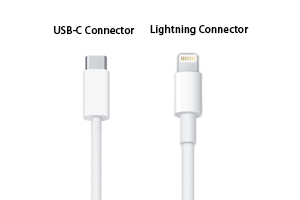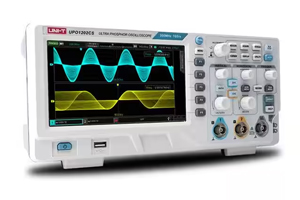-

-
Understanding Types of ROM: A Complete Guide to Read-Only Memory
Published:2025-05-07
ROM – Read Only Memory: Basics, Structure, Size, and Classifications in Digital Electronics There are many types of memory available for a device. The common options include ROM, RAM, and hard drive. Knowing each of these memory types is vital to understanding how each is used and for which applications. Today, we want to focus […]
-

-
USB-C Vs Lightning Connectors: What is the Difference and When To Use Each
Published:2025-04-30
Lightning Vs USB-C! (Comparison) (Review) USB-C vs. Lightning is a common debate as people compare the functionality and performance of the two types of connectors. USB-C has more compatibility since it works with different devices from various manufacturers, compared to Lightning, which is primarily designed for Apple products. Below, we delve deeper into the comparison to […]
-

-
What are Analog to Digital Converters? Understanding their Importance in Electronics
Published:2025-04-29
Electronic Basics #27: ADC (Analog to Digital Converter) Introduction Analog-to-digital converters are devices that transform analog signals into discrete digital signals. Such a conversion is necessary since most electronics and computer systems operate using digital signals. This also allows for ease of storage, transmission, and manipulation of data. The analog to digital converter (ADC) now has […]
-

-
The Ultimate Guide on How to Use an Oscilloscope as a Pro
Published:2025-04-28
If you are new to using an oscilloscope, this is the right guide for you. We talk about how to use an oscilloscope for beginners. In the end, you will have an easy time operating an oscilloscope. What is an oscilloscope? An oscilloscope is a test instrument that graphically displays electrical signals, showing how these […]
-

-
Voltage Dividers: Why They Are Important in Circuits and How They Work
Published:
Introduction A voltage divider is a simple electronic circuit used for producing an output voltage that is lower than the input voltage. Most of the time, the output voltage is only a fraction of the input voltage. Voltage dividers consist of resistors connected in series to make its functionality possible. The output voltage is measured in […]
-

-
What is Polarity in Electronics? Understanding Polarity in Electrical Systems
Published:
Introduction Let’s say you want to connect a battery to a light or even your vehicle. Understanding battery polarity is essential so that you don’t damage circuit components by allowing electricity to flow in the wrong direction. So, what is polarity? Polarity in electronics is the presence of two distinct and oppositive poles. They include the […]
-

-
How to Use a Multimeter For Beginners: Expert Guide to Get You Started
Published:2025-04-25
Introduction A multimeter, whether analog or digital, is a crucial electronic device used for measuring different types of electrical properties, such as resistance, current, and voltage, of a circuit. The multimeter has a display where it shows the values depending on what is being measured. It’s a simple device to use, but not everyone knows […]
-

-
What are Transistors? Definition, Parts, How They Work and Uses
Published:
Introduction Transistors are tiny semiconductor devices important for controlling and regulating the flow of voltage and current in a circuit. So, they can act as a switch or amplifier in a circuit. Transistors remain fundamental in modern electronics. That is why you can find them in every device, ranging from computer chips to smartphones. It […]